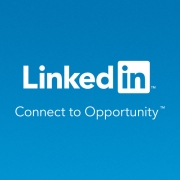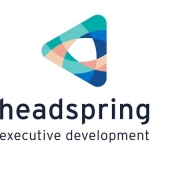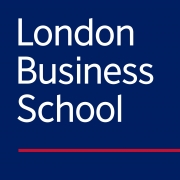In these times, virtual teamwork will be a critical function in the workforce. I have little doubt that mastering virtual teamwork in practical application will be a hallmark of the successful, next generation leader.
Putting “Virtual” to the Test
Even ten years ago, I thought that managing virtual teams would be a critical skill of the twenty-first century leader. I had hypotheses about how to do this well, but I needed data to test these. So while directing the Emerging Leaders Programme at London Business School, I added a simulation to the curriculum both to invite participants to reflect on their effectiveness at virtual teamwork and, for myself, to identify the critical success factors.
I invited participants to complete a competitive challenge, using both face-to-face and virtual methods. Before arriving to the program, I asked students to submit pressing dilemmas that their companies faced. I then identified two of these questions for the students to tackle in the competition; questions were easily comprehended, did not rely on technical or deep, industry-specific knowledge, and would have great impact on the business if these thorny issues were cracked. For example, in one cohort, the dilemmas were related to the news industry:
How can an international news division bring to life its new brand tagline, “Never Stop Asking?”
How can newspapers make money selling to a Google generation used to reading content for free?
Students were split into two teams that incorporated a diverse set of expertise, nationalities and industries. They had one week to brainstorm and refine solutions to each question. They were allowed—and encouraged—to take advantage of the “wisdom of crowds” by soliciting input from people outside the program too.
There was one catch: Team A had to answer question one using only face-to-face communications only and question two using solely virtual methods. For Team B, these requirements were reversed. When working virtually, students could use any tools or forums they wished, including video or teleconference, e-mail or social networking sites. We also constructed a simple website that allowed teams to post, categorize, rank, and discuss proposed solutions. The website was also accessible to people outside the course, if they were invited, who could then review and contribute to the online discussion.
At the end of the week, the teams presented their conclusions to a panel who scored the merits of each solution without knowing whether students used face-to-face or virtual methods.[i] After the panel gave its feedback, we discussed what the students found to be the advantages and pitfalls of virtual teamwork, as well as the key differences between working virtually and working face-to-face. This exercise brought to light many dynamics about the nature and requirements of leading and working in a virtual team.
What Works, What Doesn’t
Virtual teams that set too many rules or were too rigid about how and when participants contributed were not as successful as those that were more flexible. Different time zones, for instance, required that teams set slightly longer deadlines. Allowing for asynchronous discussion versus requiring real-time “chat” generated higher quality ideas and responses to colleagues’ suggestions.
Virtual teams that collaborated using customized, online team rooms produced final ideas and presentations that the panel scored better than those teams who used social networking sites such as Facebook. These sites often offer little functionality to organize activities effectively, search information, engage in complex discussions, or rank ideas. Teams using Facebook, for instance, either did not participate in brainstorming activities or did so unproductively, perhaps because interactions on the site tend to be largely superficial. Users weren’t used to using the site for this exercise’s purpose.
Although virtual teamwork isn’t necessarily more effective than face-to-face teamwork, we concluded that virtual teamwork that is well-facilitated and well-supported by a platform that is more fit for the purpose can actually be superior to face-to-face interaction, particularly for large or geographically dispersed teams. We encouraged students returning to work to have conversations with their IT departments about creating customized team rooms rather than relying on existing sites with pre-determined features.
A Different Set of Skills
The program’s participants consistently converged on at least two realizations about virtual teamwork:
First, charisma, a traditional leadership trait, is usually disintermediated in a virtual environment. Therefore, team members could not rely on force of personality, but on clarity and the ability to delegate. “Leading” in these interactions was less about exhibiting authority and more about emphasizing team accountability, reaching consensus, and being open to challenge.
Second, merit has more power than personality or hierarchy in virtual teams. Introverts or those who are working in a second language may actually thrive in a virtual team. We have all experienced how factors such as introversion/extraversion, cultural norms, gender, career level, and reporting lines contribute to only a few voices, sometimes only one voice, dominating.
At its worst, an overly hierarchical dynamic can not only ruin engagement, or even careers, it can aggravate catastrophic decisions. The story of the tragic 2009 crash of Air France flight 447, which killed 228 people, is the cautionary tale. On that flight, the crew came up through both a national and industry culture (though the latter is changing) where the captain is always right, who brooks no “interference” from his subordinates. In turn, the captain’s co-pilots, such as those on that fateful day, do not feel it is their place to disagree with their superior officer whether it is a command, a suggestion or an opinion.
On May 31st, 2009, en route from Rio de Janeiro to Paris, storms lay in the way of the planned flight path, and a rare but not unheard-of mechanical fault occurred when ice crystals at high altitude clogged the airplane’s air pressure probes, causing altitude measures to read less accurately. The co-pilots chose not to alert the captain to the storms that lay ahead, deferring to him to identify the bad weather and plot a course to avoid it, which did not happen. The flight crew made a series of poor decisions and even worse communications that ultimately drove the plane into the Atlantic Ocean.[ii] The Air France case illustrates the all-too-common dynamic that occurs in so many offices, factories and stores around the world, where initiative, productive dialogue, challenge and imagination are preemptively suppressed.
Most of our organizations’ architectures are predicated on a pyramidal hierarchy, which for centuries has suggested a tacit dogma of the manager’s infallibility. This canon has ruined many millions of meetings, where idea creation gives way to waiting for the leader to say something, and agreeing or remaining silent, where the extrovert jumps in with their contribution first and often, while the introvert is still processing options and responses.
In a virtual, asynchronous environment, introverts can reflect before answering, the less confident can reply thoughtfully and bravely. Adding anonymity to contributions reduces the senior voices from owning the lion’s share of the conversation. The best ideas rise to the top instead of those which happen to be from the most senior. Therefore, if an important objective of any leader is to bring out the best in everyone, then he or she should utilize a virtual forum for at least some discussion and particularly on very diverse teams. Two important points to remember when considering virtual teamwork:
First, technology does not solve every problem. Virtual teamwork can fail if leaders do not attend to the fundamental problems of coordinating, engaging, and motivating individuals across time zones. It’s easy for team members to disengage when they’re not face-to-face, so the leader must convey a high degree of enthusiasm and clarity, and agree on who is accountable for what from the start.
Second, assumptions are dangerous. If team members are from different cultures, countries, and time zones, leaders cannot assume that everyone shares the same understanding of how the team will work. For example, will everyone be in one virtual “place” at the same time, or will they contribute on their own time? Our students’ most important takeaway is that to lead a virtual team, they must focus on team maintenance (How are we going to work together?) before task maintenance (What is the problem we are trying to solve?).
[i] I’m grateful to Moti Shahani for his collaboration with this exercise.
[ii] William Langewiesche, “The Human Factor,” Vanity Fair, October 2014.
The above is a chapter excerpt from my book Next Generation Leadership:
http://nextgenerationleadershipbook.com








